Are you wondering how to maintain the shelf life of your liquid glass epoxy? Well, look no further. In this discussion, we will explore the various factors that affect the lifespan of epoxy, as well as the proper storage conditions to ensure its longevity.
From temperature and humidity considerations to tips for long-term storage, we've got you covered. So, if you want to ensure that your liquid glass epoxy is always ready for your projects, keep on reading.
Key Takeaways
- Epoxy resin can last for many years when stored properly in air-tight containers at room temperature.
- Different resins have varying shelf lives, with polyester resins lasting about six months.
- Proper storage conditions, including temperature control and sealed containers, are crucial to extending the shelf life of epoxy resin.
- Contamination from moisture, dirt, or chemicals can negatively affect the shelf life and performance of epoxy resin.
Understanding Shelf Life
Understanding the shelf life of epoxy is crucial for ensuring the longevity and effectiveness of your stored materials. Epoxy resin can last many years when stored properly at room temperature and in closed containers. However, it's important to note that different resins have varying shelf lives. For instance, polyester resins have a shelf life of only about six months.
Expired epoxy materials can cancel out any initial cost savings you may have enjoyed. The effectiveness of epoxy can diminish over time, resulting in compromised performance and potential project failures. To avoid this, it's essential to practice proper storage and good housekeeping.
When it comes to shelf life, WEST SYSTEM Epoxies are known for their excellent longevity. By following the manufacturer's guidelines for storage, you can ensure that your epoxy remains in optimal condition for an extended period. This means storing it at the recommended temperature and keeping it in sealed containers to prevent moisture and air exposure.
Understanding the shelf life of epoxy isn't just about preserving your investment; it's also about ensuring the success of your projects. By storing your epoxy properly, you can always have a reliable supply on hand for your various applications. So, make sure to check the expiration dates and practice good storage habits to maximize the shelf life of your epoxy resin.
Factors Affecting Shelf Life
The shelf life of epoxy resin can be influenced by various factors, including proper storage conditions, temperature, moisture contamination, cross-contamination, exposure to contaminants, and material changes.
One important factor is the proper storage conditions. Epoxy resin should be stored at room temperature and in closed containers to extend its shelf life. This helps to prevent moisture contamination and cross-contamination, both of which can negatively impact the resin's shelf life.
Temperature also plays a significant role in the shelf life of epoxy resin. Higher temperatures can shorten the pot life and overall shelf life of the resin, while lower temperatures can cause crystallization or darkening of the material, affecting its usability.
Exposure to contaminants is another factor that can affect the shelf life of epoxy resin. Contaminants such as dust, dirt, or chemicals can degrade the resin and shorten its shelf life. Therefore, it's important to store the resin in a clean and controlled environment to minimize exposure to such contaminants.
Additionally, material changes such as crystallization, darkening, or oxidation can also impact the shelf life and usability of epoxy resin. These changes can occur over time due to exposure to air, moisture, or improper storage conditions.
To ensure the maximum shelf life of epoxy resin, it's crucial to store it properly, maintain the recommended temperature range, avoid moisture and cross-contamination, minimize exposure to contaminants, and monitor for any material changes. By following these guidelines, you can ensure that your epoxy resin remains usable for its intended purpose.
Proper Storage Conditions
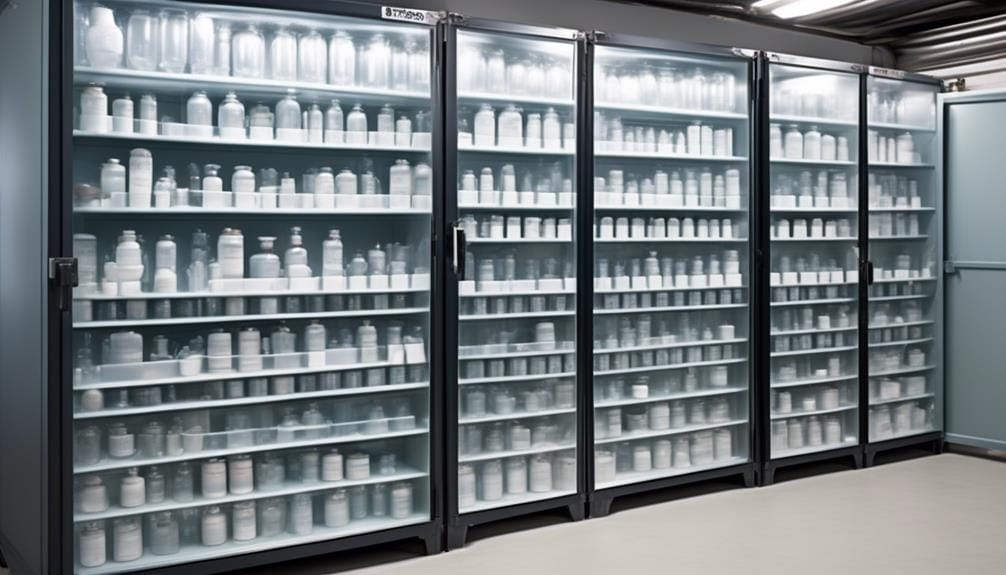
To ensure the proper storage conditions for liquid glass epoxy, there are three key points to consider.
First, it's crucial to control the temperature of the storage space, keeping it within the optimal range of 60°F to 80°F.
Second, store the epoxy in air-tight containers to prevent exposure to moisture and humidity.
Finally, avoid placing the containers in direct sunlight, as prolonged exposure to UV rays can degrade the epoxy resin.
Following these guidelines will help maintain the quality and longevity of your epoxy resin.
Temperature Control
Store your epoxy in a warm, climate-controlled space to ensure proper temperature control and optimal storage conditions. Maintaining the ambient temperature is crucial for preserving the shelf life of your liquid glass epoxy. Keep the unmixed epoxy components within a temperature range of 60°F to 80°F to prevent any adverse effects.
Exposing the epoxy to extreme temperatures can lead to degradation and reduced performance. Additionally, storing the epoxy in a dry place is essential to prevent humidity exposure, as moisture can negatively impact the quality of the resin. Ensure that the containers are properly sealed to protect the epoxy from any external factors.
Air-Tight Containers
Maintaining proper storage conditions for liquid glass epoxy involves utilizing air-tight containers to prevent degradation and preserve the resin's quality and effectiveness. Storing epoxy resin in air-tight containers is crucial for extending its shelf life and maintaining its performance. By sealing the containers properly, you can protect the epoxy from air exposure, which can lead to resin crystallization and a decrease in clarity. Additionally, air-tight containers offer protection against moisture and humidity, preventing these elements from compromising the resin's integrity. This ensures that the epoxy remains workable and easy to apply, even after extended periods of storage. By using air-tight containers, you can confidently store your liquid glass epoxy, knowing that it will be ready for use whenever you need it.
| Column 1 | Column 2 | Column 3 | |
|---|---|---|---|
| Row 1 | Prevents degradation | Extends shelf life | Maintains clarity |
| Row 2 | Preserves quality | Protects from moisture | Ensures workability |
| Row 3 | Prevents resin crystallization | Guards against humidity | Facilitates easy application |
| Row 4 | Protects from air exposure | Ensures effectiveness | Ready for use anytime |
| Row 5 | Maintains resin integrity | Preserves performance | Confident storage |
Avoid Direct Sunlight
Properly safeguarding your liquid glass epoxy from direct sunlight is essential for maintaining its quality and effectiveness. Exposure to sunlight can cause the epoxy to degrade, resulting in a shorter shelf life and reduced performance.
To prevent this, it's crucial to store your epoxy in a cool, dry place away from direct sunlight. Choose a location that isn't prone to temperature fluctuations and ensure that the containers are properly sealed to prevent any moisture or humidity exposure.
Maintaining a consistent temperature range of 60°F to 80°F for the unmixed epoxy components is also important for preserving their quality.
Temperature and Humidity Considerations
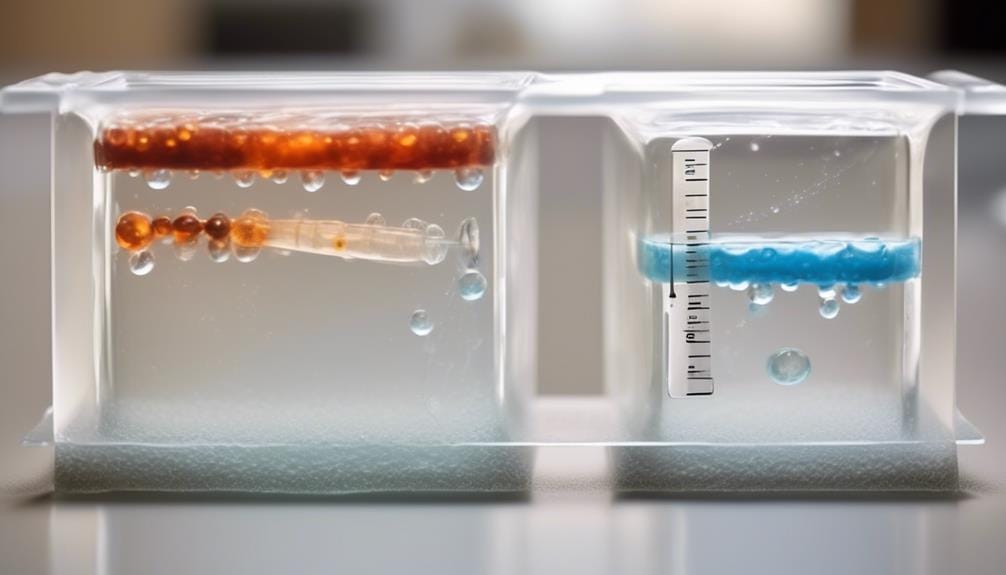
To ensure optimal results, it's essential to carefully consider the temperature and humidity conditions when working with liquid glass epoxy. Temperature plays a significant role in the pot life of the epoxy. If the temperature is too high, the pot life will be shortened, while a lower temperature will extend the pot life. It's crucial to note that WEST SYSTEM keeps lot numbers and retains batches for up to two years, ensuring the quality and consistency of the product.
However, temperature can also lead to crystallization of the resin. If this occurs, you can resolve it by warming the can and stirring the epoxy thoroughly. On the other hand, humidity can cause moisture contamination in the epoxy. Leaving the container open or exposing it to condensation can lead to unwanted moisture in the mixture, affecting the final result.
It is worth mentioning that the 209 Extra Slow Hardener, when exposed to air, can form a thin film and solidify. Therefore, it's crucial to ensure proper sealing and storage of the hardener to prevent wastage.
Avoiding Contamination
Storing epoxy in sealed containers is crucial to prevent moisture contamination and maintain its long-lasting performance. Moisture can react with the epoxy, leading to a shorter shelf life and reduced effectiveness. Therefore, it's essential to ensure that the containers are tightly sealed to prevent any moisture from entering.
Cross-contamination is another factor that should be avoided when working with epoxy. When mixing the hardener and resin, it's important to use separate spoons for each component. This prevents the risk of cross-contamination, which can affect the curing process and overall performance of the epoxy.
In addition to moisture and cross-contamination, it's important to keep epoxy containers away from dirt, sawdust, or any other chemicals. These substances can potentially contaminate the epoxy and compromise its quality. It's recommended to store the containers in a clean and dry environment, away from any potential contaminants that could damage the epoxy.
Tips for Long-Term Storage
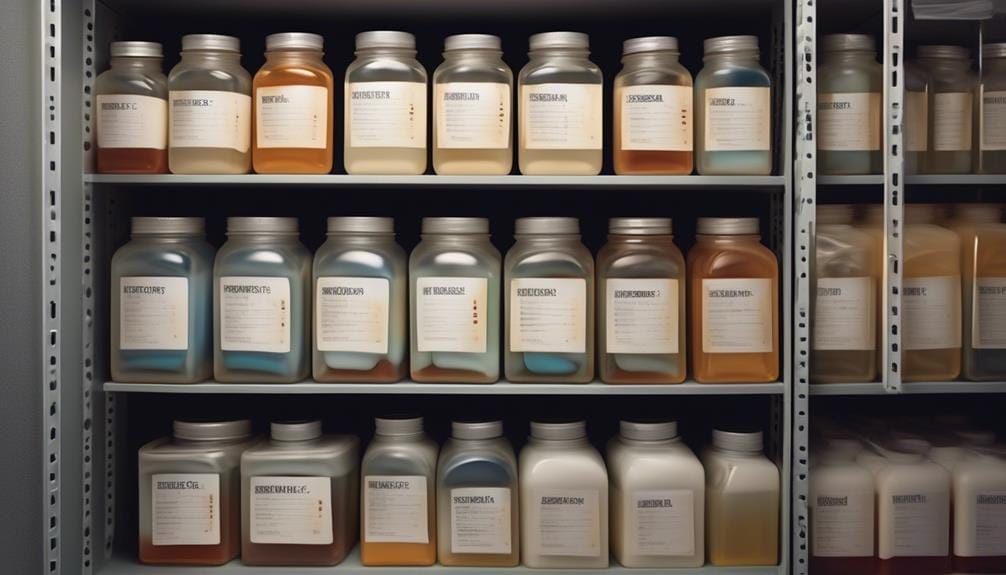
To ensure the long-term storage of liquid glass epoxy, there are a few key points to consider.
Firstly, it's important to select the proper containers for storing the epoxy, ensuring they're sealed correctly to preserve its shelf life.
Secondly, maintaining an ideal temperature range of 60°F to 80°F is crucial to prevent any changes in the epoxy's consistency.
Lastly, storing the epoxy in a dry place will help avoid exposure to moisture, which can affect its quality.
Proper Container Selection
When storing epoxy resin for long-term use, ensure that you select sealed containers made of compatible materials to prevent contamination and maintain the resin's quality. Choosing the right container plays a crucial role in prolonging the shelf life of epoxy resin and preserving its properties. Here are some tips for proper container selection:
| Tips for Proper Container Selection | Benefits |
|---|---|
| Choose sealed containers | Prevents contamination |
| Select containers made of compatible materials | Maintains resin quality |
| Use opaque containers | Shields resin from sunlight exposure |
| Opt for containers with airtight seals | Prevents air exposure |
| Store epoxy resin in a cool, dark place | Preserves clarity and color |
Ideal Temperature Conditions
To ensure that your epoxy resin remains in optimal condition for long-term storage, maintaining the ideal temperature is essential. The ideal temperature range for storing unmixed epoxy components is between 60°F and 80°F. It's crucial to store the epoxy in a warm climate-controlled space to prevent temperature fluctuations that could affect its quality.
Additionally, keeping the epoxy in a dry place is crucial to avoid exposing it to humidity, as moisture can adversely affect its shelf life. To further preserve the shelf life of the epoxy, it's important to ensure that the containers are properly sealed to prevent air or moisture from entering.
Avoid Exposure to Moisture
To avoid exposing epoxy resin to moisture during long-term storage, it's crucial to store it in a dry place and ensure that the containers are properly sealed. Moisture can negatively impact the shelf life of epoxy resin, leading to reduced effectiveness and potential waste.
When stored in a dry environment, the resin is protected from humidity exposure, which can cause it to degrade and become unusable. Properly sealed containers prevent moisture from seeping in and compromising the quality of the epoxy.
It's also important to keep the unmixed epoxy components within a temperature range of 60°F to 80°F, as extreme temperatures can affect the shelf life as well.
Signs of Expired Epoxy
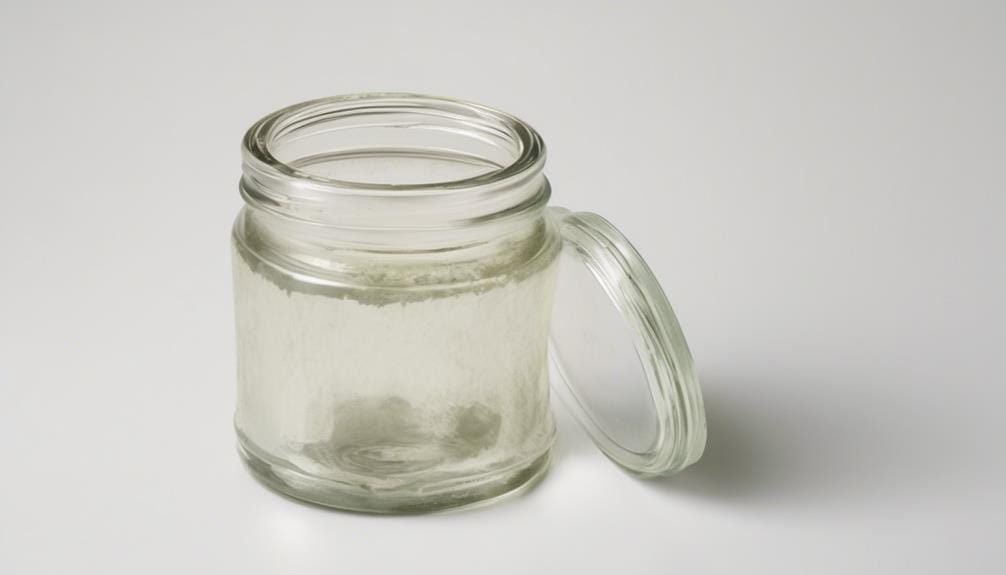
One clear indication of expired epoxy is a noticeable change in color or appearance, such as yellowing or darkening. This change in color is a result of the epoxy's components breaking down over time, rendering it ineffective for use.
Another sign of expired epoxy is the thickening or crystallization of the resin or hardener. When the epoxy reaches the end of its shelf life of one year, the components can start to solidify, making it difficult to mix or apply properly.
Additionally, an unpleasant odor, such as an ammonia-like smell, can be a sign that the epoxy has expired. This odor is caused by the degradation of the epoxy's components over time.
It's important to note that expired epoxy may also contain contaminants, which can affect its quality and performance. Therefore, it's crucial to properly store the epoxy to prevent exposure to moisture and other contaminants, ensuring its optimal shelf life and effectiveness.
Extending Shelf Life
Expired epoxy can be avoided by properly storing it, and extending its shelf life is crucial to ensure its effectiveness.
To extend the shelf life of liquid glass epoxy, it's important to follow proper storage tips. First and foremost, epoxy should be stored in sealed containers at room temperature. This helps prevent the resin and hardener from oxidizing, which can negatively impact the epoxy's performance.
Additionally, it's advisable to test older epoxy before use to determine its usability and avoid material wastage. Solvent-free epoxies, when stored in sealed containers, have unlimited shelf lives.
It's also important to store epoxy away from direct sunlight, as exposure to UV rays can degrade its quality over time. Maintaining recommended storage temperatures, usually around 60-90°F (15-32°C), is also crucial for prolonging the shelf life of the epoxy.
Disposal of Expired Epoxy
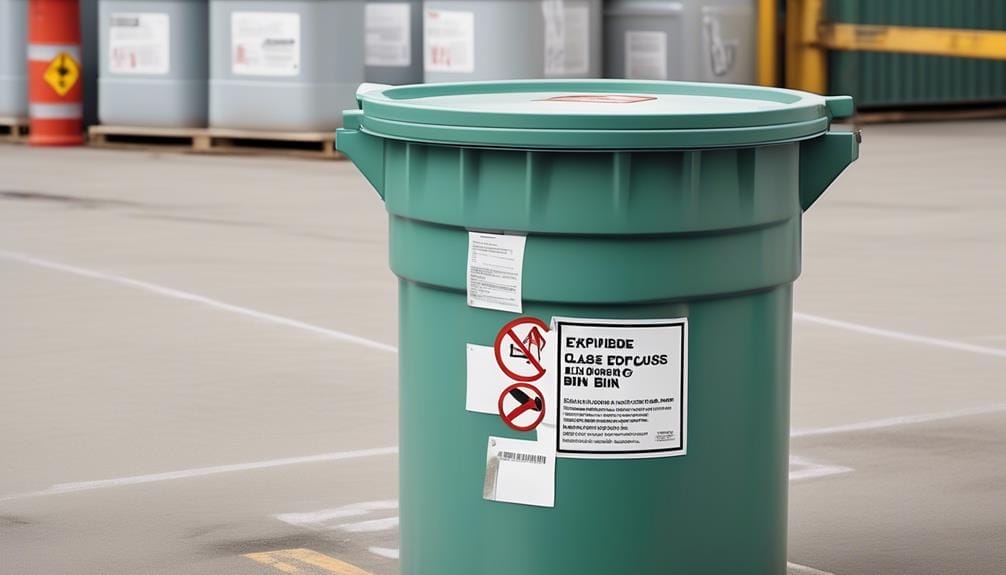
Proper disposal of expired epoxy is essential to ensure environmental safety and compliance with regulations. When dealing with expired epoxy, it's important to follow specific guidelines to prevent any negative impact on the environment.
Here are three important steps to consider for the proper disposal of expired epoxy:
- Contact local hazardous waste disposal facilities: It's crucial to reach out to your local hazardous waste disposal facilities to obtain specific guidelines on how to dispose of expired epoxy. These facilities have the expertise and resources to handle hazardous materials safely.
- Avoid regular trash or drain disposal: Don't dispose of expired epoxy in regular trash or pour it down the drain. Doing so can lead to environmental contamination and potential harm to water sources. Make sure to treat expired epoxy as a hazardous material and dispose of it accordingly.
- Consider donation or recycling options: If you have unused or unexpired epoxy, consider donating it to local schools or community organizations. Additionally, research recycling options for epoxy containers and materials. Recycling can help reduce waste and minimize the environmental impact.
Remember to always follow the manufacturer's recommendations for disposing of expired epoxy products. Ensure that the epoxy is fully cured before disposal, as this will minimize any potential hazards.
Frequently Asked Questions
Does Liquid Glass Epoxy Go Bad?
Liquid glass epoxy can go bad if not stored properly. To maximize shelf life, store it at room temperature in closed containers. Follow proper storage conditions for liquid epoxy resin to ensure it remains usable for your projects.
How Long Can Epoxy Be Stored?
When it comes to epoxy, it's crucial to know its shelf life and proper storage techniques. So, how long can epoxy be stored? Let's delve into the details and ensure you're well-informed.
How Do You Store Liquid Resin?
To store liquid resin properly, you should ensure proper storage conditions and use the best containers available. This will help extend its shelf life and prevent contamination, ensuring that the resin remains usable for your projects.
Can I Store Epoxy Resin in Garage?
You can store epoxy resin in a garage, but it's not recommended. The temperature fluctuations and exposure to air can negatively affect its shelf life and performance. It's better to store it in a basement or outdoor shed.
Conclusion
In conclusion, proper storage is essential to extend the shelf life of liquid glass epoxy.
By storing it in closed containers at room temperature and avoiding exposure to humidity, you can ensure its availability and usability for projects.
Good housekeeping and using WEST SYSTEM Epoxies, which have excellent shelf life, can further enhance the lifespan of the epoxy.
Remember, by following these tips, you can maintain the quality and effectiveness of your epoxy for years to come.





